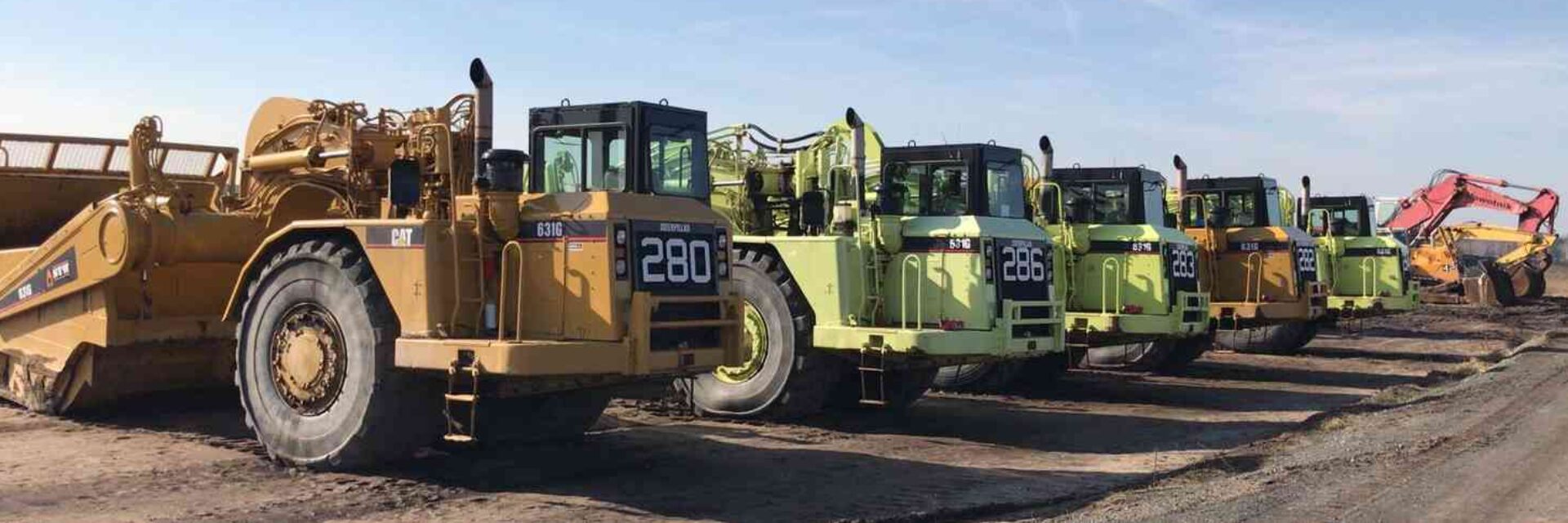Reduce replacing cost for undercarriage components
When it comes to maintaining tracked construction machinery like excavators and bulldozers, the undercarriage is one of the most expensive and essential components. A well-maintained undercarriage not only ensures smooth operations but also significantly reduces costly downtime and repairs. In this newsletter, we delve into critical issues, from track adjustment failures to choosing the right track shoes and measuring undercarriage wear.

The Hidden Costs of Incorrect Track Adjustment
Improperly adjusted tracks are a common issue in tracked excavators, track-loaders and bulldozers, often overlooked by operators. Tracks that are too tight accelerate wear on bushings, sprockets, idlers, and even the bearings in final drives. This can lead to premature failure of components, despite other parts, like rollers and track links, still being in good condition.
For excavators in the 15–30-ton range, track sag is critical and should generally be set between 3-5 inches (7-10 cm). A track chain that is too tight not only shortens component life but also risks cracking bushings. Too lose chains can to jump over the idler centre rim or the sprocket during drive operation. On uneven ground track rollers are no longer guiding the chain in line.
Tip: Always refer to your machine’s manual for specific guidelines or consult your local dealer for advice.
Corrosion and Seized Track Links: A Costly Problem
A significant issue seen in hydraulic excavators is the seizing of track links due to water—especially saltwater—penetration. Damaged seals allow water to corrode internal components, locking bushings and pins in place. Attempts to restore mobility with oil or grease are rarely successful, as the damage is inside the pins and bushings, not the visible chain links.
For minor issues, riding the machine on hard surfaces may restore some mobility. However, in severe cases, replacement of the chain is unavoidable.
Finding the Right Track Shoe Width: Striking the Balance
Choosing the correct track shoe width is a balancing act. Narrow track shoes provide sometimes better traction but may cause the machine to sink into soft ground. Narrower machines are easier to transport. On the other hand, extra-wide track shoes (LGP) distribute ground pressure more evenly but introduce increased torsion forces on drive components when operating on uneven terrain, leading to faster wear.
For every application, it’s essential to select the track shoe width that minimizes both wear and operational inefficiencies. Consult an expert or dealer to determine the best fit for your machine’s typical working environment.

Precision Measurement: Know Your Undercarriage’s Remaining Life
The undercarriage accounts for a substantial portion of a machine’s value—take the Caterpillar D8T, for example, where the undercarriage value can reach €25,000. Misjudging the remaining life by even 30% can result in a financial loss of €7,500.
Proper measurement ensures accuracy. MEVAS-trained inspectors recommend using tools like:
- Track Gauges: To ensure the correct track spacing.
- Ultrasonic Gauges: For measuring track link and bushing thickness.
- Track Roller Callipers: To assess roller diameter and wear.
- Shoe Height Gauges: To check track shoe condition.
By using these tools, operators can determine wear levels and predict replacement timelines accurately.
Avoiding Roller Sequence Errors
In Caterpillar or Komatsu XL bulldozers, proper track roller sequencing is crucial. These machines typically use a mix of single and double flange rollers, but inexperienced fitters sometimes install rollers in the wrong sequence—or worse, entirely single-flange rollers. Such errors can compromise performance and accelerate wear. Always cross-check roller configurations with manufacturer specifications.
Key Inspection Points for Used Machines
When inspecting a used bulldozer or excavator, pay special attention to:
- Undercarriage Components: Measure track shoes, sprockets, track links, bushings, and idlers.
- Equalizer Bar and Bearings: This component connects undercarriage frames and facilitates horizontal movement. Any excessive play in joints and pivots can indicate expensive repairs ahead.
Thorough inspections can save thousands in repair costs. If you’re unsure about measurements or need a detailed guide, MEVAS offers step-by-step instructions and video tutorials.
Maintaining Undercarriage Health: Best Practices
- Monitor Track Tension Regularly: Adjust sag based on manufacturer recommendations.
- Choose Track Shoes Wisely: Match the width to the terrain for optimal performance.
- Schedule Regular Measurements: Use proper tools to assess wear and address issues proactively.
Ready to Inspect Your Equipment?
Whether you’re maintaining your fleet or evaluating a used machine, focusing on the undercarriage will save you time and money. Need help? Contact our experts to get tailored advice and inspection services.
By taking these proactive measures, you’ll not only protect your investment but also ensure the long-term efficiency of your tracked machines.
Follow our Newsletter about Used Machinery Inspection Topics
The Mevas Newsletter about Used Machinery Inspection Topics can also be found on the Plant & Equipment Website. If you are a LinkedIn user there is even more content about Used Equipment Inspections. But you must be logged in to read it.
- A Safer Way To Purchase Used Heavy Equipment
- Operating Heavy Machinery in High Ambient Temperatures
- Is It Safe To Buy Used Construction Equipment From China?
- Global Crane Inspection And Valuation Services
- Extend the Life of Your Tracked Machinery’s Undercarriage: Maintenance Tips and Insights
- Avoid Overpaying! Here’s How to Verify Operating Hours on Construction Equipment
- How to Become a Heavy Equipment Inspector [2025]: A Step-by-Step Guide from MEVAS
- How to Respond to Hydraulic Pump Failure in Heavy Machinery: A Step-by-Step Guide
- Pros and Cons of Buying Construction Machinery at Auction: Inspection and Risk Tips
- Why Downgrading Engines and Removing DPFs in Construction Machinery is Risky
- Oil Diagnosis in Construction Machinery: Essential Analysis for Equipment Maintenance
- Avoid Costly Mistakes When Buying Used Construction Machinery Abroad
- Buying A Used Crusher, Where And Which One?
- Buying Used Excavators: What To Inspect And How
- Buying Used Construction Equipment: Expert Tips for a Safe Purchase
- Inspections of Used Equipment Around the World
- Global Used Machinery Inspections

